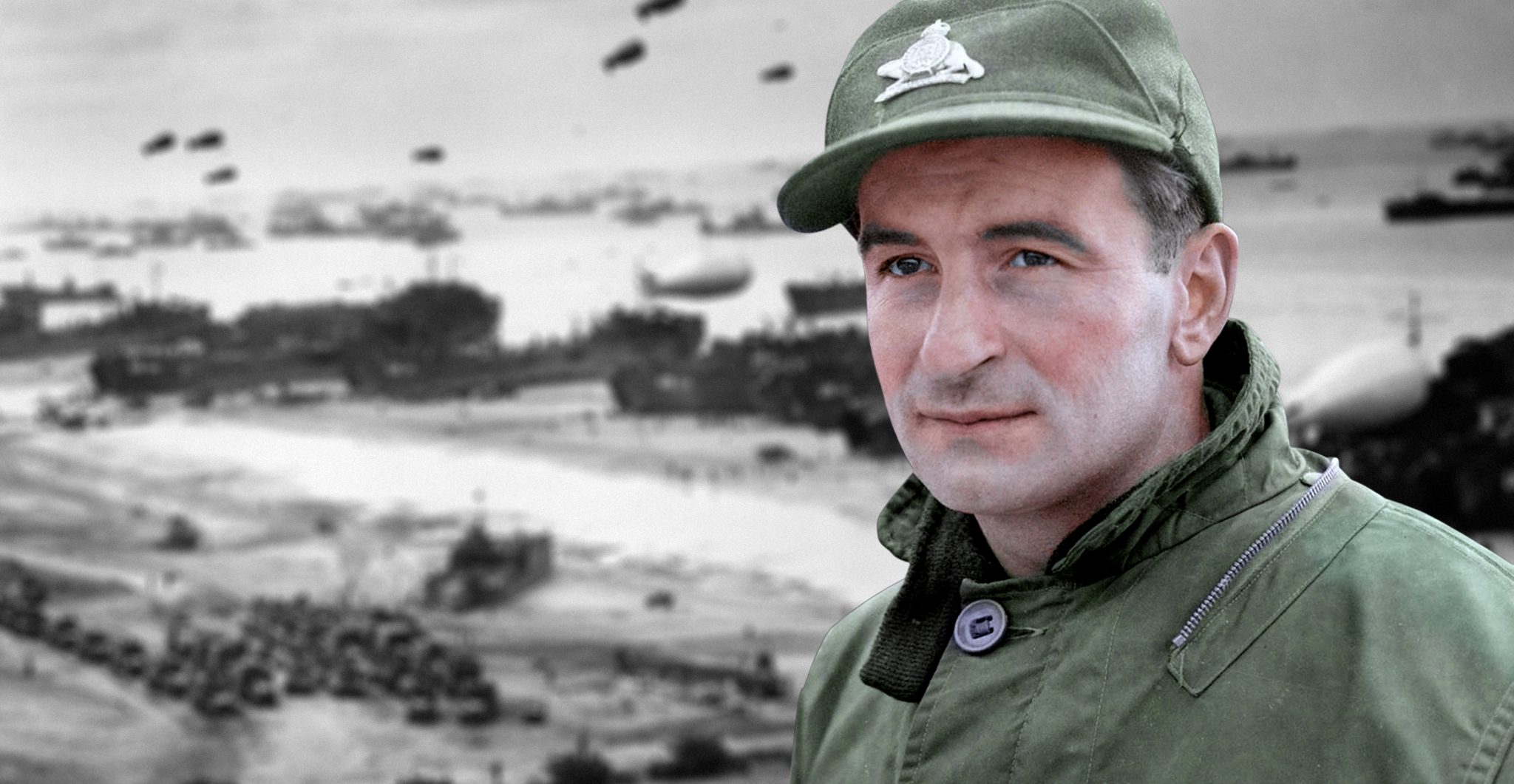He first saw action on D-Day, on which he captured a German half-track by himself.
Despite being half blinded and having his back broken in World War II, Léo Major not only refused to go home, but he also continued fighting for the rest of the war, and then in another war afterward. In the process, he liberated a whole city and captured its German garrison single-handedly. In fact, he captured dozens of Germans by himself on three different occasions, and was awarded the Distinguished Conduct Medal three times, although he refused the first one.
Who was this seemingly unstoppable Canadian, and how did he accomplish such incredible feats?
Léo Heads to War
Léo Major was not promising as a child–at least in the eyes of his father. In fact his father was so harsh towards Léo that he decided to leave home when he was 14 and move in with his aunt. As Léo entered adulthood his opportunities seemed limited, so he enlisted in the military at the age of 19, determined to prove his father wrong.
Fate would have it that he got a chance to prove himself very early on in his career. He first saw action on D-Day, on which he captured a German half-track by himself. He saw action against a German SS patrol shortly thereafter and killed four of them. However, fate is a cruel mistress, and one of the SS members’ phosphorous grenades detonated near him, taking out one of his eyes.
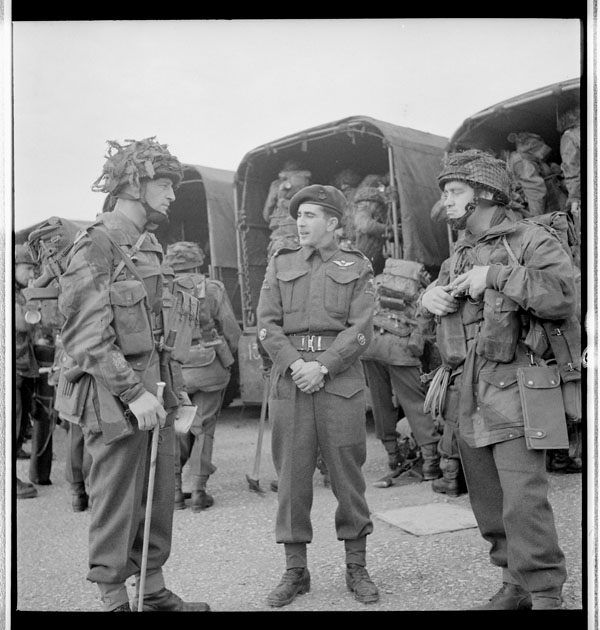
While receiving medical care he was told that although he had served admirably and made his country proud, the war was over for him. Léo disagreed. He explained that he would go back into combat, as he only needed one eye to aim a rifle anyway.
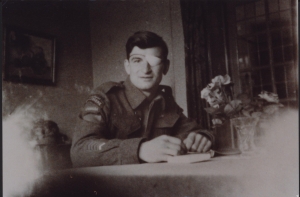
Léo returned to battle sporting an eye patch, and proved that he was still as capable as ever by capturing 93 Germans by himself. He ambushed several Germans who were on patrol, and after capturing one to use and bait and killing several others, he captured their commanding officer. The Germans, probably unaware that there was only one man attacking them, surrendered. Although SS soldiers began to fire on him and his prisoners, he calmly marched them back to base.
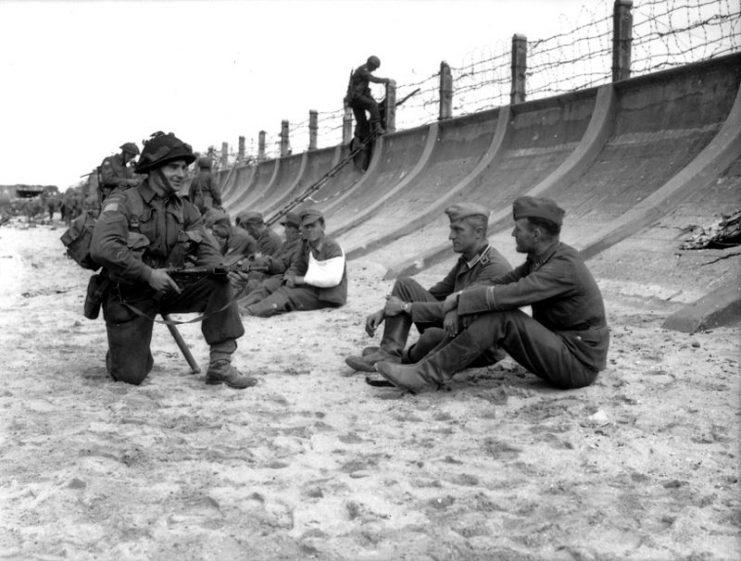
Second “War-Ending” Injury
Although Léo Major was offered a Distinguished Conduct Medal, an award second only to the Victoria Cross, he refused it. Allegedly this was due to his low opinion of General Montgomery, who would have been the one to give him the medal.
At this point in the war, early 1945, the Germans had been beaten back out of France. Major was helping clean up the casualties left behind in a King Tiger tank when he received his second “war-ending” injury. As he helped a chaplain drive German corpses to be buried, his vehicle stuck a land mine.
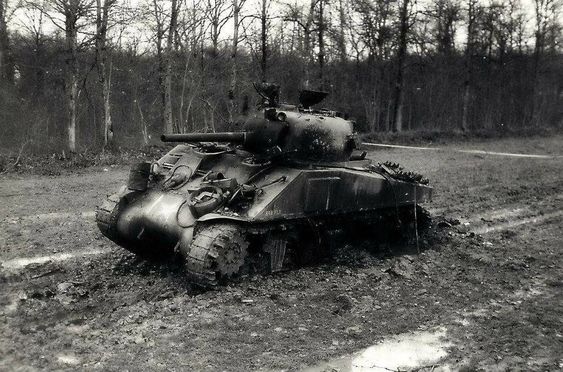
Léo was thrown from the vehicle and landed on his back, breaking his spine in several places as well as breaking both ankles and multiple ribs. After a grueling trip to a field hospital 30 miles away, and numerous morphine shots, he was informed that there was no way he could keep fighting.
Léo disagreed–again. This time he had to escape from the hospital in the middle of the night a week later to find a different location to recover. How he escaped is something of a mystery, but it is known that he stayed with a French family in a small town where he recovered for another month.
Liberation of Zwolle, and a Distinguished Conduct Medal
Even though he was technically Absent Without Authority, he was not punished when he returned to the army. He then volunteered, along with his friend Willie Arseneault, to conduct reconnaissance and contact the Resistance in the German-occupied Dutch city of Zwolle. Although they were supposed to conduct reconnaissance to guide later artillery fire, they wanted to avoid civilian casualties, so the two of them decided to liberate the city themselves.
Things went poorly from the start and Arseneault was killed after they were discovered by some Germans. However, Léo avenged him by killing two of the Germans who attacked them. At this point Léo knew he had limited time to act, as the Germans were now on the alert.
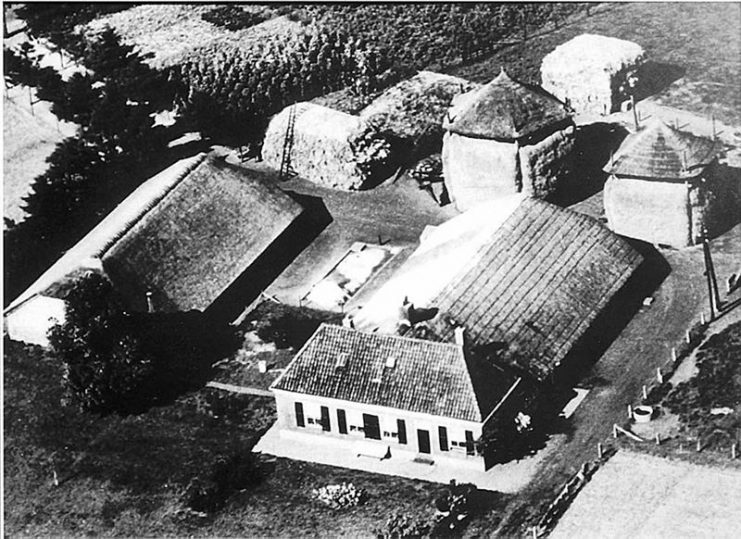
His luck turned after he found and captured a German officer who could speak French. Léo was French-Canadian and informed him in French that the Canadians would bombard the city at 6:00. He then let the officer go, and even gave him back his gun, in the hopes that the news would demoralize the other Germans and get them to surrender.
Léo then took yet another insane risk. He began to run around the city, firing his machine gun and throwing grenades. He even burned down the Gestapo HQ in the city and engaged a number of SS officers in their headquarters. After he killed four officers, the others ran. Throughout the night he captured over 50 Germans, who thought that the whole Canadian army had stormed the city.
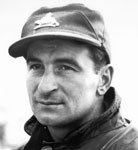
The Germans retreated in the middle of the night, and Leo returned to the Canadian lines with Arseneault’s body. He informed his commanders of what had happened. The bombardment was called off and the city was saved. This time Léo accepted the Distinguished Conduct Medal.
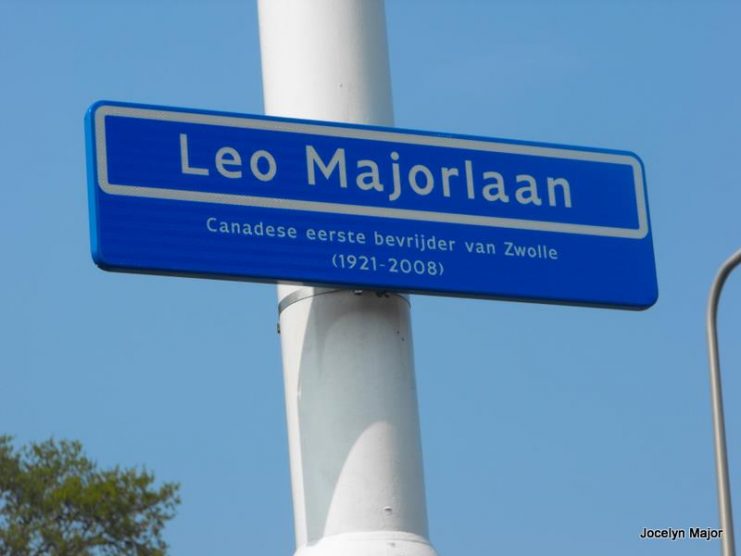
Korea
Although World War II soon ended, Léo was still determined to serve his country. When the Korean War broke out in 1950, he once again volunteered for service. By the time Léo saw action, the Chinese had joined the war and pushed the United Nations’ forces back.
Hill 355, sometimes called “Little Gibraltar,” was of particular strategic importance. American forces there were overwhelmed and failed to hold their lines. Léo and the Canadians were ordered to retake it. Léo was placed in command of an elite assault team, and they managed to climb up the hill undetected. Once in the middle of the Chinese force, they opened fire, and panicked the Chinese into a retreat. However, the Chinese counterattacked soon after.
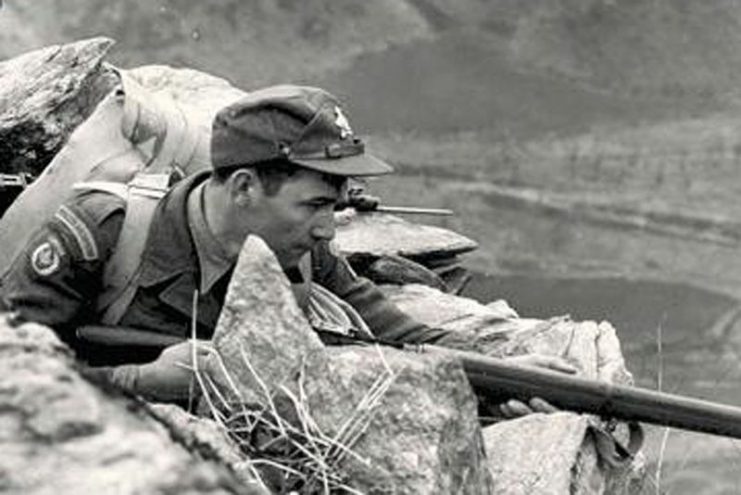
Léo, with only about 18 men at his disposal, was ordered to retreat. In typical fashion, he did not. He and his men managed to hold the position, but took incredible risks to do so. One artillery commander recounted that Léo was “not satisfied with the proximity of my barrage and asks to bring it closer…In effect my barrage falls so close that I hear my bombs explode when he speaks to me on the radio.”
He was awarded another Distinguished Conduct Medal for his service, becoming the only Canadian to receive the medal in two different wars.
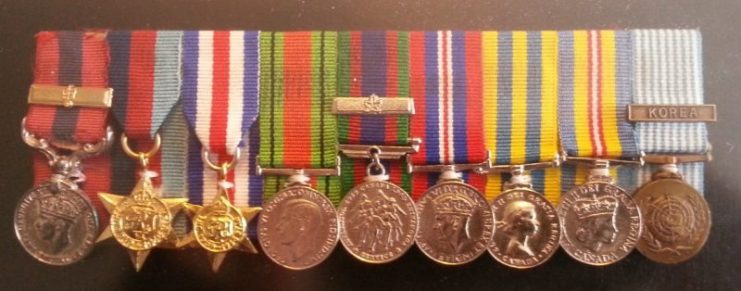
The Legend
Léo Major returned to Zwolle a number of times after the war, and made friends with many of the grateful townspeople. He is celebrated there to this day, and even had a street named after him.
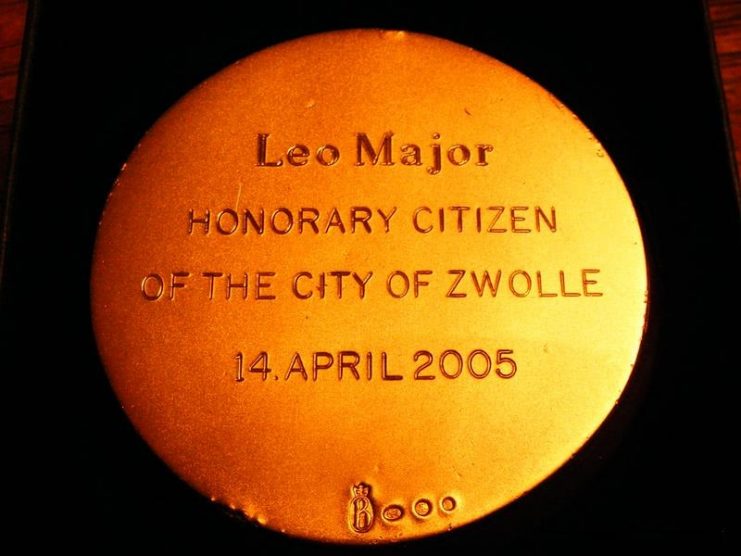
The current mayor of Zwolle, Henk Jan Meijer, stated that Léo’s legacy endures because “He is a symbol of our freedom. It’s very important that our children still remember that it’s not easy to be free. It’s vulnerable, freedom. You always have to think about that.”
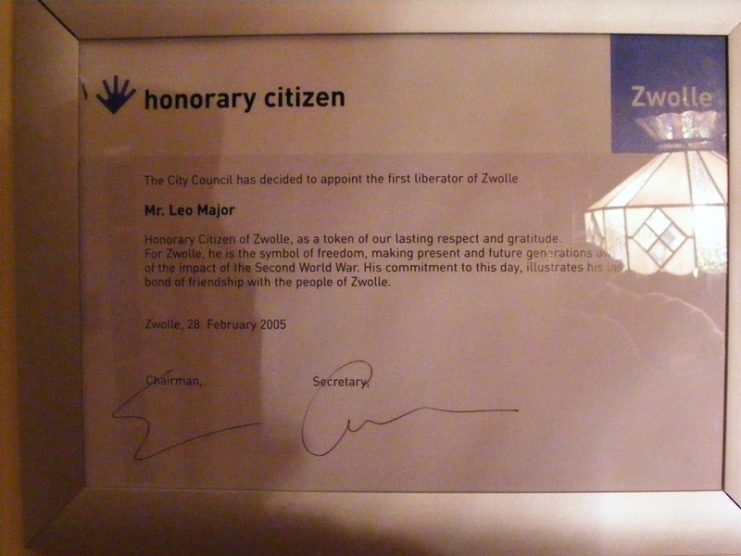
If Léo Major’s actions were portrayed in a Hollywood movie, there is little doubt that it would be panned by critics for having such an unbelievably tough hero.
How could one man survive losing an eye and having his back broken, then go on to win the Distinguished Conduct Medal twice? And yet, that is exactly why Léo Major has gone down in history, and why his legacy will be long remembered in both Canada and Europe.
